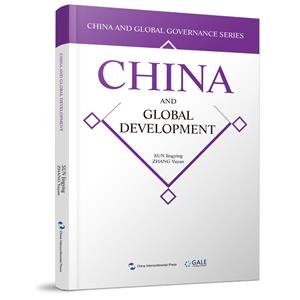Introduction Chapter One China's Development Achievements and Concepts 1.1 Achievements in the Pre-Reform Era (1949–1978) 1.1.1 The Early Form of the Industrial System 1.1.2 The Improvement of People's Livelihoods 1.1.3 Explorations of a Uniquely Chinese Path to Socialist Development 1.1.4 The Creation and Maintenance of a Peaceful International Environment 1.2 Achievements in the Post-Reform Era (1978–Present) 1.2.1 Increasing Material Power 1.2.2 The Growing Influence of the RMB 1.2.3 A Greater Voice in the Development of Global Institutions 1.2.4 The Growing Popularity of Chinese Concepts 1.3 The Evolution of Development Concepts in the Post-Reform Era 1.3.1 Development, the Absolute Principle 1.3.2 The Theory of Three Represents 1.3.3 The Scientific Outlook on Development 1.3.4 The New Development Concepts Proposed by Xi Jinping Chapter Two The Theoretical Origins and Policy Development of the Reform and Opening-Up 2.1 The Understanding of the Reform and Opening-Up 2.1.1 Report to the 12th CPC National Congress (1982) 2.1.2 Report to the 13th CPC National Congress (1987) 2.1.3 Report to the 14th CPC National Congress (1992) 2.1.4 Report to the 15th CPC National Congress (1997) 2.1.5 Report to the 16th CPC National Congress (2002) 2.1.6 Report to the 17th CPC National Congress (2007) 2.1.7 Report to the 18th CPC National Congress (2012) 2.1.8 Report to the 19th CPC National Congress (2017) 2.2 The Policy Development of the Reform and Opening-Up 2.3 Historical Contexts of the Opening-Up 2.4 Trade, Technological Progress, and Institutional Improvements—Understanding Growth from the Perspective of Development Economics 2.4.1 Gains from Trade: From Ancient Chinese Concepts of Trade to Adam Smith 2.4.2 Institutional Innovation: Gains from a Well-Developed System 2.4.3 Innovation Based on Technological Progress Chapter Three China's Development Practices in the New Era 3.1 Development Achievements in the New Era 3.2 The New Development Concepts: Innovative, Coordinated, Green, Open, and Shared Development 3.2.1 Building a Modern Economic System Led by Innovative Development 3.2.2 Promoting Harmonious Economic and Social Linkages, Centered around Coordinated Development 3.2.3 Achieving Sustainable Economic and Social Development through Green Development 3.2.4 Integrating into the World Economic System through Open Development 3.2.5 Striving for Common Prosperity and Improved Living Standards through Shared Development 3.3 The Development Concepts for the New Era 3.3.1 Adopting a New Development Model That Prioritizes Domestic Economic Circulation 3.3.2 Seeking Development Driven by Scientific and Technological Innovation 3.3.3 Gaining New Vitality in Development through Deepening Reforms 3.3.4 Creating New Advantages in International Cooperation and Competition through High-Quality Opening-Up 3.3.5 Forming a New Landscape of Social Development through Joint Development, Shared Governance, and Mutual Benefits Chapter Four China's Participation in Building a Global Partnership for Sustainable Development 4.1 Implications of the Global Partnership for Sustainable Development 4.1.1 An Overview of the Implementation Methods 4.1.2 Contents of the Five Implementation Methods 4.1.3 The Global Partnership for Sustainable Development and Global Governance 4.2 The Building of an Innovative, Dynamic, and Inclusive World Economy 4.2.1 The BRI 4.2.2 Innovative Methods to Improve Openness 4.3 China's Participation in the New Global Partnership for Sustainable Development 4.3.1 China's New Journey toward a High-Level Opening-Up in the New Era 4.3.2 The New Idea of Achieving Shared Growth through Consultation and Collaboration4.4 The New International Development Cooperation through the BRI4.4.1 China's Approaches to Development Cooperation4.4.2 Practical Measures for Advancing Development Cooperation4.4.3 The Furtherance of International Cooperation under the BRIChapter Five A Comparison of Development Models around the World5.1 Post-World War II Development Models and Experience5.1.1 The East Asian Development Model5.1.2 The Latin American Development Model5.1.3 The Beijing Consensus5.1.4 The Washington Consensus5.2 History of Development Economics Research5.2.1 The Wartime Planning of Different Countries (Early and Middle 1940s)5.2.2 The Shift in Focus from Europe to Developing Countries (1948–1949)5.2.3 A Boom in Development and Development Policies (the 1950s) 5.2.4 Moving into Uncharted Waters (the 1960s) 5.2.5 Reflections on the Traditional Development Concepts (the 1970s) 5.2.6 Recession, Debt, and Developing Countries (the 1980s–the Late 20th Century) 5.2.7 From the Early 21st Century to the Present5.3 Evolution of the Development Concepts of the United Nations5.3.1 A Development Concept Based on the Relationship between Development, Peace, and Human Rights (1960s–1970s) 5.3.2 A Development Concept Based on Sustainable Development (1980s–1990s) 5.3.3 Current UN Sustainable Development Issues (2000–2015 and 2015–2030) 5.4 The Chinese Solution to Global Development 5.4.1 A Discussion on the Roles of the Chinese and the US Governments 5.4.2 The Approach to Economic Growth for Developing Countries 5.4.3 A New Growth Paradigm Featuring Inclusiveness and Mutual AppreciationBibliography





















